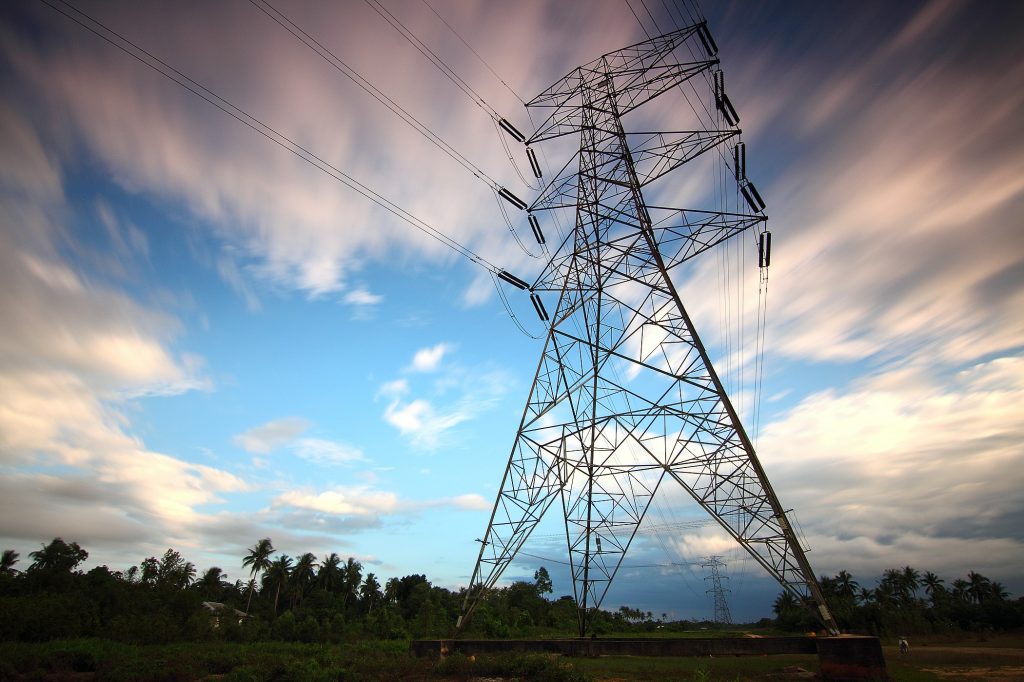
By P&R-Tech (Portland, Or.)
From costly fires to rolling power outages, a downed power line can wreak havoc on a community. The most troubling thing is that many of these disasters are preventable. Of course, some downed lines are unavoidably caused by nature. But an aging power grid adds additional risk—and lots of liability. Let’s find out more about the extent of the problem and how to address it.
The Dangers of Sagging Power Lines: Outages, Fires, and Preventable Disasters
It’s difficult to measure the damage and costs associated with a downed power line. With that said, it’s best to avoid damages altogether. Some downed lines are difficult to predict. Like if a tree falls on a line due to high winds or if lightning strikes a power pole. But some downed lines could have been avoided with a routine inspection.
Fuses and circuit breakers are common fail-safe mechanisms for electrical equipment. If a power line does fail then a fuse could trigger the power line to stop flowing electricity. This can act to limit local damage as well as prevent larger black outs. However, estimates find that in approximately 30% of cases, a fuse isn’t blown quickly enough to prevent current from flowing through a downed wire. This means that a downed line can remain charged. This can ignite nearby vegetation and brush, especially in fire-prone areas, causing a power line fire.
Existing equipment can sometimes be past its prime. The older our infrastructure gets the more likely its components could fail. Without a robust line monitoring program, utilities can’t detect pre-failures. Such as exposed electrical wiring, leaning electric poles, or vegetation overgrowth. These pre-failures can accumulate over time, causing complete failure and power outages. In fact, it’s estimated that power lines caused roughly 1,500 fires in California between 2014 and 2017 and more than 4,000 in Texas in a three-year period.
Another significant problem caused by aging or sagging power lines can be outages. Data from Portland utility PGE shows that equipment failures were responsible for approximately 15% of customer outage hours. Power outages are far more than an inconvenience to some. Extended outages can interrupt local commerce and have dangerous repercussions for people with health issues.
Bringing America’s Electrical Grid into the 21st Century
The American Society of Civil Engineers (ASCE) recently gave America’s electricity infrastructure a grade of C. Our aging infrastructure is what dragged down this grade despite an overall increase in spending.
“We typically design for 50 years,” said Otto Lynch, P.E., F.ASCE, F.SEI, and a member of the Communality Associations Institute (CAI), in diving into the factors that contributed to the grade. “And over 70% of our transmission and distribution grid is over 50 years old. It’s surpassed its design life span.”
The United States is incredibly reliant on a vibrant and functioning power grid. Electrical blackouts have a severely detrimental effect on our communities. Texas experienced this in early 2021 when long power outages left more than 4.5 million customers without power.
Lynch noted, “Electricity today is so much more critical to our daily lives than it was just 30 or 40 years ago. There’s a perception that we’re maybe having more problems, but in reality, the expectations have increased.”
Types of Power Line Monitoring Technology and Uses
There are many known challenges to updating a nationwide power grid system like time, funding, and a trained workforce. But there are other options to possibly safely extend the life of our aging infrastructure. The answer is state-of-the-art power line monitoring technology.
Line monitoring technology can be very useful for utilities. These wireless devices attach to power lines and have an array of sensors. They can detect line sag and sway, alerting a utility of a potential issue with one or more of their lines. Sometimes ice build-up or high winds can be the culprit. It’s safer to get ahead of the problem than to wait until a line collapses. A severe line sag can prompt a utility to quickly shut off power until a worker can inspect or repair the line.
These devices, like the Sentrisense power line monitoring system, monitor electricity flow. An abnormal flow could indicate a branch or tree is touching a wire. This technology can also detect temperature. High heat could indicate a fire, alerting utilities of an issue.
One of the greatest benefits of these devices is being able to identify an issue and its exact location, instantly. These devices are also great for areas that aren’t easily accessible like thick forests and mountains.
For more information on how P&R Tech can contribute to your power line safety, contact us today.
